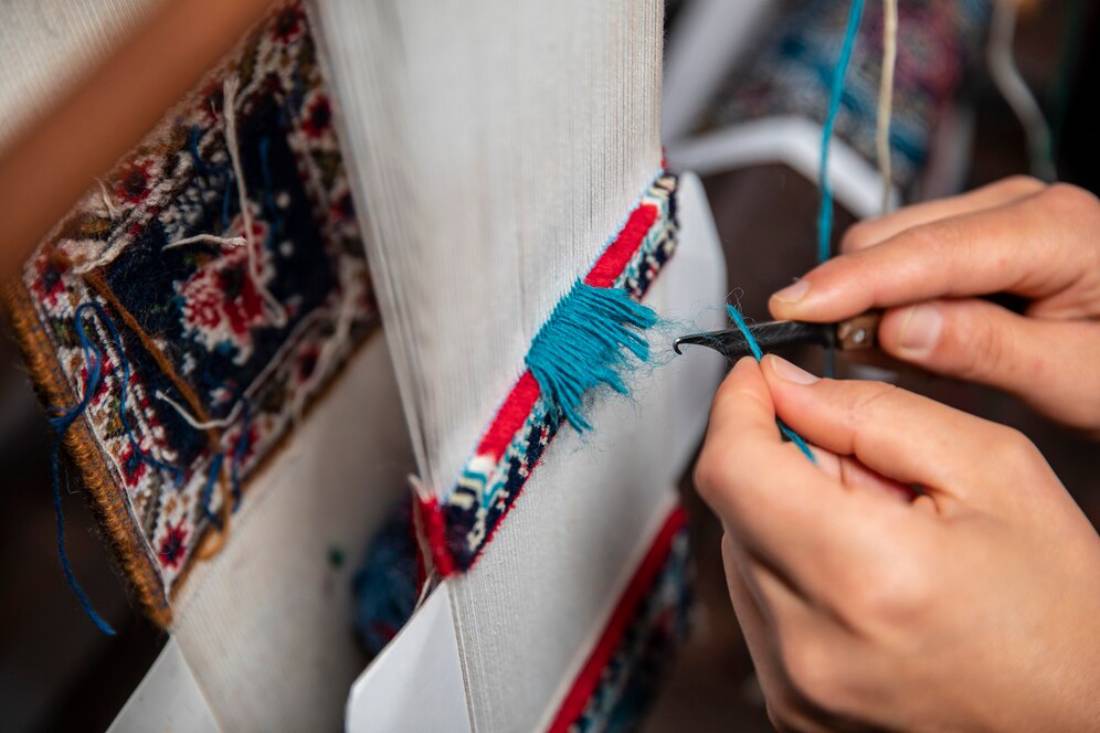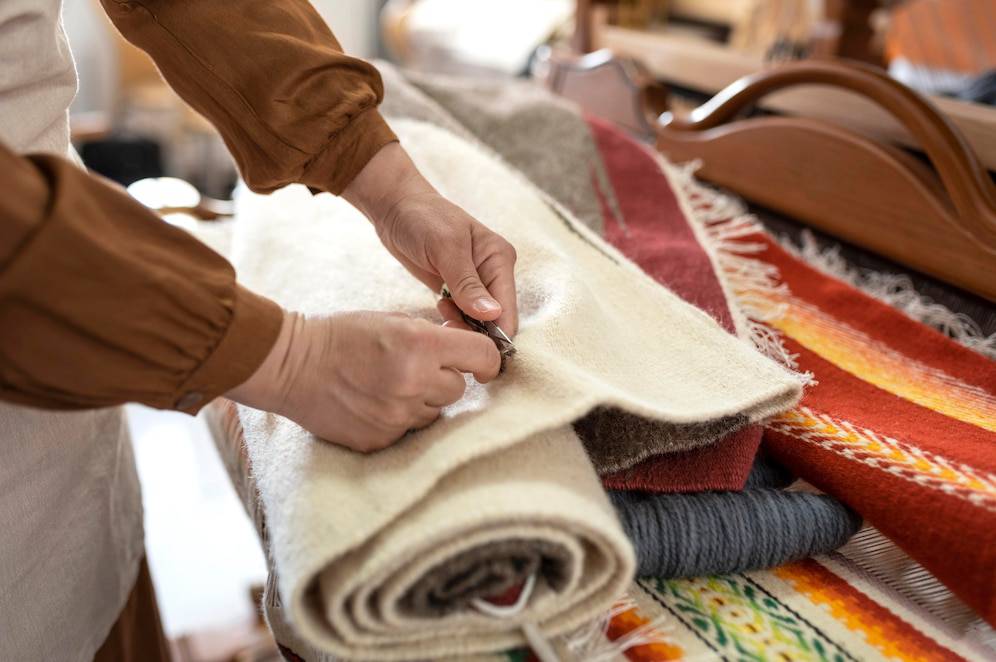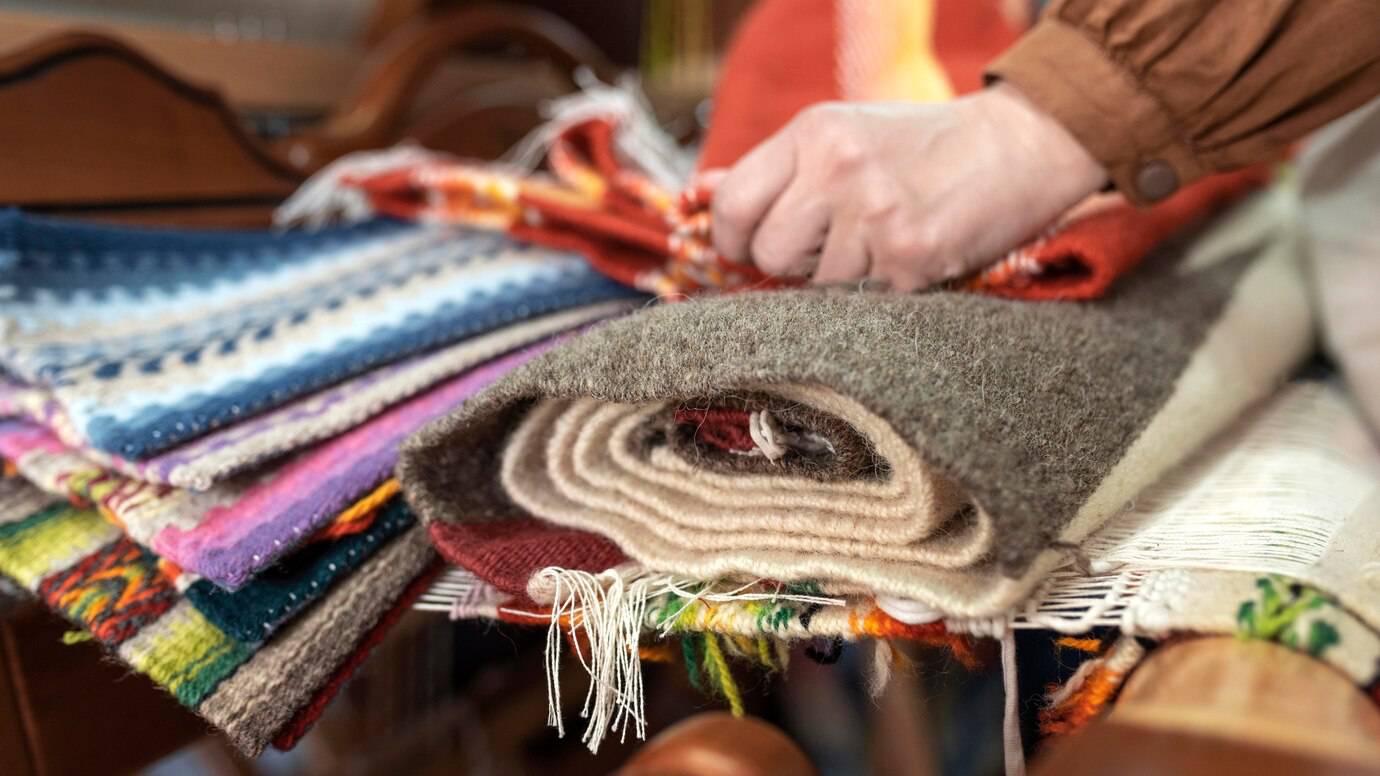
Handmade Rugs and Mats: DIY Weaving Projects
Adding a personal touch to your home décor has never been easier with DIY home textiles like handmade rugs and mats. Weaving your own rugs allows you to customise colours, patterns, and materials to perfectly match your space while embracing sustainable practices. Whether you’re a beginner or an experienced crafter, these weaving for beginners projects will help you create unique and functional pieces that enhance your home.
Handmade rugs and mats add warmth and character to any space. Unlike mass-produced options, crafting your own allows for complete control over texture, size, and design. Whether you’re making a small accent mat for an entryway or a large woven rug for your living room, this guide will equip you with the skills and inspiration to create stunning handmade rugs from scratch.
Why Make Your Own Rugs and Mats?

Creating your own DIY home textiles offers several benefits:
- Customisation – Choose colours, textures, and patterns that suit your home’s décor and personal style.
- Sustainability – Use upcycled fabric scraps or natural materials for eco-friendly rug-making.
- Budget-Friendly – Handmade rugs are often more affordable than store-bought options, allowing for high-quality materials at a lower cost.
- Creativity & Relaxation – Weaving is a meditative and rewarding craft that promotes mindfulness.
- Durability & Quality – Handmade rugs last longer and are made with better craftsmanship than mass-produced alternatives.
Materials Needed for Handmade Rugs

Before you start your weaving for beginners project, gather these materials:
Basic Supplies:
- Warp thread (cotton, wool, or linen for durability)
- Weft materials (fabric strips, yarn, rope, or recycled t-shirts)
- A weaving loom (or DIY frame loom)
- Scissors for cutting fabric or yarn
- Tapestry needle for threading materials
- Comb or fork for tightening the weave
- Wooden dowel or rug backing (optional for finishing)
- Measuring tape to ensure rug dimensions fit your space
- Fabric glue for securing loose threads or edges
DIY Weaving Projects: Handmade Rugs & Mats
1. Simple Woven Rug for Beginners
A basic woven rug is a great way to get started with weaving for beginners. It is an excellent first project to practice different weaving patterns and experiment with colours.
Steps:
- Prepare the loom – Stretch the warp thread tightly across the loom to create a strong base.
- Choose your weft material – Wool, cotton, or fabric strips work best for durability.
- Start weaving – Use the over-and-under method to create a classic woven pattern.
- Pack the rows tightly – Use a comb to ensure an even and sturdy weave.
- Experiment with patterns – Try alternating colours or different weaving techniques for a decorative effect.
- Finish the edges – Knot the ends or add fringe for a stylish touch.
- Secure the weave – Remove from the loom and attach a rug backing for stability.
2. Braided Rag Rug
Braided rugs are a durable and timeless way to use recycled fabric while creating an attractive design.
Steps:
- Cut fabric into strips – Old bedsheets, t-shirts, or denim work well for this project.
- Braid three strips together – Secure the ends with a knot and continue braiding.
- Coil the braid into a circular or oval shape – Sew or glue it together as you go to prevent unravelling.
- Continue braiding and coiling – Expand the rug until it reaches the desired size.
- Secure the edges – Tuck in loose ends and stitch them in place to reinforce the rug.
- Add a non-slip backing – Helps keep the rug from sliding on hard floors.
3. Punch Needle Rug
Punch needle rugs create thick, soft textures that are perfect for cozy spaces. This method is simple yet effective for making intricate designs.
Steps:
- Stretch a fabric base on a wooden frame to create tension.
- Use a punch needle to push yarn through the fabric in loops.
- Follow your pattern – Use different yarn colours and textures for depth.
- Trim and secure the loops – Apply rug adhesive to keep loops intact.
- Attach a backing – Keep the rug sturdy for long-term use.
- Create unique designs – Abstract shapes, floral motifs, or geometric patterns enhance the aesthetic appeal.
4. Crochet Rope Rug
A crocheted rope rug is a stylish and durable DIY home textile option. It works well in high-traffic areas such as hallways and patios.
Steps:
- Choose thick cotton rope and a large crochet hook.
- Start with a magic circle – This technique ensures a seamless, sturdy base.
- Continue crocheting in rounds – Increase stitches evenly to expand the rug.
- Secure the edges – Finish with a strong knot or binding stitch to prevent fraying.
- Block the rug – Dampen and shape it to lay flat, ensuring a professional finish.
- Add colour variations – Use different rope shades or alternate coloured yarns for a striped effect.
5. No-Sew T-Shirt Yarn Rug
If you want a no-sew option, a t-shirt yarn rug is perfect for quick and easy crafting.
Steps:
- Cut old t-shirts into long strips – The softer the fabric, the cosier the rug.
- Knot or loop them onto a non-slip rug mat – This creates a shaggy, plush texture.
- Fill in the design – Tie strands tightly for a dense and comfortable surface.
- Trim to even the edges – Shape the rug to your preference, whether round or rectangular.
- Mix different fabric textures – Combine cotton, fleece, or jersey materials for a unique feel.
Decorating with Handmade Rugs & Mats
Once you’ve made your handmade rugs, incorporate them into your home décor:
- Use round rugs as statement pieces in entryways or under coffee tables.
- Layer different sizes and textures for a cosy, bohemian aesthetic.
- Create themed rugs, and choose colours and patterns that reflect the season or occasion.
- Hang woven mats on walls for a unique textile art display.
- Place rugs under dining tables for warmth and visual interest.
- Use them as bedside rugs for a soft, welcoming touch in the morning.
Caring for Your Handmade Rugs
To ensure the longevity of your handmade rugs, follow these care tips:
- Vacuum gently or shake out loose dirt regularly.
- Spot clean with mild detergent to avoid damaging delicate fibres.
- Hand wash delicate rugs and let them air dry to prevent shrinkage.
- Rotate rugs periodically to prevent uneven wear and maintain their shape.
- Use a non-slip backing to keep them in place and protect them from wear and tear.
- Avoid direct sunlight for long periods to prevent colour fading.
DIY Handmade Rugs & Mats: A Beginner’s Guide to Weaving & Home Textiles

Creating DIY home textiles like handmade rugs and mats is a fulfilling way to enhance your space with personalised, sustainable décor. Whether you’re braiding, weaving, crocheting, or using the punch needle technique, these weaving for beginners projects make it easy to craft beautiful, functional pieces that reflect your style.
Get started today with one of these fun DIY home textile projects and transform your home with handmade charm! Looking for more creative ideas? Subscribe to our newsletter for more tips on weaving for beginners, home décor, and eco-friendly crafting!